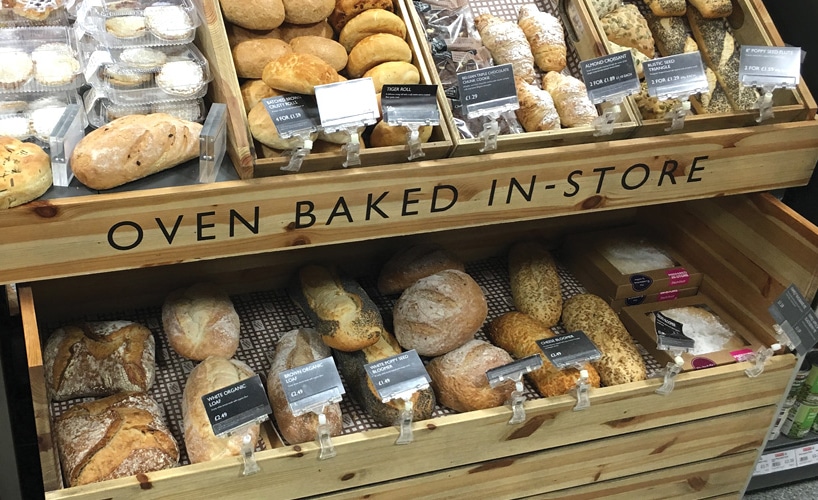Partners for Growth caught up with Unilever Category Director, Kat Simpson, to understand what impact the pandemic and subsequent lockdown restrictions has had on shopper buying behaviour within the convenience channel.
What overall impact has the pandemic had on shopper behaviour?
With more people staying at home and working from home, we saw a big shift to people shopping locally and online, which have been the two channels to see the most growth.
Whilst convenience has dropped back from its peak in 2020, we are still expecting it to continue to grow until 2023, as people have reengaged with the value and benefits of a community convenience store. It’s online shopping that has been the biggest winner taking share from supermarkets, as shoppers have turned to it doing their best to avoid the virus and having experienced the benefits of online first hand, they have overcome their resistance to it. Shopping online is now becoming a new routine and habit and a more mainstream retailer channel. With increasing retail and supplier resource being directed to online, we can only see this channel continuing to grow strongly.
What specific areas of change have you seen in convenience?
Overall growth in convenience has been driven by shoppers choosing to visit fewer stores to protect themselves from the virus and choosing to get more of their main shop during these local store visits. As a result, the convenience basket spend increased dramatically during the first lockdown. For many convenience retailers, basket spend and sales were driven up when they implemented on-demand delivery services to help their community stay safe and retailer feedback suggests that these delivery orders substantially drove up basket spend, as well as growing customer loyalty. Although sales have dropped back from the peak levels of the first lockdown, as government restrictions continue to be enforced, they are still significantly higher than pre Covid levels.
However, not all areas of the store have shown growth, food-to-go sales in particular have dropped back because of the reduced footfall from people staying at home. Additionally, sales of impulse categories such as soft drinks and confectionery have fallen significantly, as fewer shoppers are visiting the stores.
We have also noticed that with more time on their hands, shoppers have taken the opportunity to reflect, making changes to their routines to embrace well-being whilst staying at home.
What have been the main trends driving changes in your core categories?
We have seen significant changes in shopper behaviour across many of our categories. The categories where the virus has had the most direct growth spike impact include personal care, home hygiene and laundry, clearly driven by shoppers wanting to protect themselves and their loved ones from infection risks.
So, what changes have there been in personal care?
Health & beauty products have been growing exponentially over the last 10 years, however, they have accelerated dramatically during the pandemic, with sales of personal care products through local convenience stores growing by 42% and now worth £312m to the convenience channel*.
If we analyse this further, we see how the dramatic changes in consumer consideration of where and how often they buy personal care products have driven this growth. The increasing importance of convenience retailers to shoppers coupled with the increasing need to wash our hands more frequently, has seen hand wash products grow by a staggering 320% in convenience.
The Personal Care category priorities have not only changed in massive favour of hand-washing, we have also seen considerable growth in the other personal hygiene subcategories including Haircare (+50%), Skincare (+42%) and Shower (31%)*.
These dramatic changes mean retailers need to review their range to ensure they are meeting the new shopper need states within convenience personal care settings – more information can be found on the Partners for Growth website.
What has been driving growth in home cleaning and laundry products?
The importance of hygiene is being more frequently and extensively communicated in the media and furthermore, more people are spending more of their time at home. These factors have meant over a two-third increase in household cleaning frequency during 2020.
This increase in shoppers buying into the subcategory more frequently has had a direct knock-on effect to sales, as you would expect, and we have seen household cleaning sales value grow 60% year on year*. In fact, it would be fair to say that cleaning is fast becoming an essential national habit and convenience retailers will need to flex their range to provide shoppers with their product and category needs.
Laundry has always been a crucial part of a customers’ everyday shop with 92% of shoppers buying into this category. Nevertheless, we have seen a 42% increase in usage as a result of the pandemic* and it is important to consider your ranging and merchandising in this high penetration, growth category. More advice can be found on our Laundry page here.
What other factors have been driving changes in shopper behaviour?
We have seen some interesting drivers of behavioural change during the pandemic and unsurprisingly health and wellness has been a big driver for many of them.
Take the Tea category for example, which has seen occasions grow to a five year high during the pandemic, as more households are consuming more tea at home*.
In part this has been driven by snacking and lunching occasions, both of which are up 14%*, but there is also an increasing trend to treating tea as an ‘occasion’ and as a result both value and volume are up in this category.
A big driver has been the national media communication around the importance of being healthy during the pandemic. This has resulted in an increasing trend for people to consume more speciality teas as part of their daily ‘wellness’ ritual to try to stay physically and mentally fit, either as a moment of pleasure, a transition into the working day, or relaxing after work back into home life.
What has been the impact on ice cream sales?
Whilst ice cream categories Impulse and Out of Home sales have suffered due to lockdown restrictions causing lower foot fall in shops as well as hospitality venues being closed, Take-Home ice cream category has seen a 30% increase in sales this year**. This has largely been driven by shoppers swapping meals in restaurants for dinners at home, often including a dessert or ice cream.
Interestingly, as noted in the last recession, we are seeing sales of premium ice cream growing faster than the rest of ice cream, as more furloughed and budgeting shoppers opt for the odd permissible treat.
What impact are recessionary fears having on sales?
The pandemic has had a big impact on shopper confidence, with many households being forced to tighten their belts as they face job losses or significantly reduced household income because of being furloughed.
With recessionary pressures continuing to increase at a time when more people have been staying at home, many households have turned to scratch cooking to make their household budgets go further. We have seen 40% increase in scratch cooking ‘occasions’ as these enable households to make a saving of 13p, or 10% per serving on average*. What’s more, we anticipate that plant-based products will continue to grow ahead of meat-based products, as the average cost of a meat-free meal is £0.88 versus £1.81 where meat or fish is included*.
Consumers are also seeking diets that reduce their carbon footprint while improving their health and this has motivated one in three people living in the UK to follow a mainly vegetable based diet with occasional meat dishes and to consider themselves as ‘Flexitarians’***. Convenience retailers need to be both price and product sensitive to optimise on these cooking ingredient sales, encapsulating the messages on how shoppers not only can save money, but also be more sustainable and improve their health.
What is your advice to help retailers cater for these changes in shopper behaviour?
The significance of the changes in shopper behaviour because of the pandemic cannot be understated. Until people feel more confident about returning back to their normal lives, I would encourage retailers to look carefully at the updated and unbiased category advice on the Partners for Growth website and ensure that their ranging and merchandising decisions consider this impartial advice. By doing this, they can be confident that they are catering for the dramatic changes in shopper behaviour resulting from the pandemic.
* Kantar L24W 9th September 20. ** Nielsen MAT 3rd October 2020 (Total Impulse)





18 Responses
5nl30i
2o2w3d
fyfuw8
oq3v2g
j0qoxz
trrcuq
rff0z0
gd5klk
4jzumn
jde9ds
cy4az6
zs36cp
tp929x
16bqzc
uxby5c
h12pek
u3eyc5
g165v2